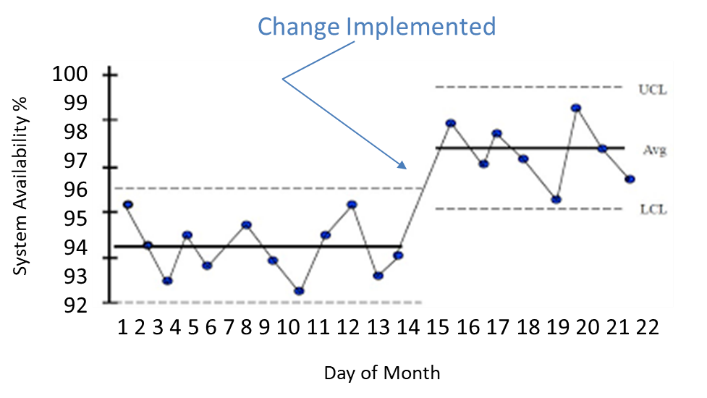Regulator Risk Reports, both State and Federal, have expressed growing concerns about the risk implications of existing change management processes. Reports of recent regulator criticisms suggest that the concerns are evolving into actions, and industry leaders must heed the warning.
While many businesses today apply established change management practices, they’ve often been limited to education and messaging. In other words, business leaders identify a change critical to enabling the strategic direction of the firm (e.g., regulatory, product, operational efficiency, technology), and provide the associated training and communication to implement that change.
North Highland applies a more comprehensive change management framework, involving seven interconnected components that help to manage risk and drive lasting results:
- Change strategy: Creating the case for change and fostering an understanding of that change
- Sponsorship: Garnering commitment
- Impacts and readiness: Identifying organizational changes
- Business involvement: Sparking excitement around new ways of working
- Communication: Delivering the right information to the right people at the right time
- Capability: Instilling the new skillsets and tools to enable success
- Sustainability: Driving adoption and making the change “stick”
Regulators have identified the frenetic change environment as a key risk across regulated industries. In its Fall 2018 Risk Report, a Federal regulator said, “changes may necessitate modifications to existing operations, policies, procedures, and systems. These changes may result in significant compliance and reputational risk if not implemented correctly and with appropriate change management processes. Many risk assessment concerns may be linked to weaknesses in change management processes.”
Multiple regulators have disclosed change management as an examination priority for 2020. For example, both the Federal Reserve and the Office of the Comptroller of the Currency (OCC) reference change management in their 2020 Supervisory Priorities. Outlining priorities for 2020, the regulators say that examinations will include attention to change governance and change controls (effectiveness) for business changes triggered by external factors and developments in IT, cyber, data management, third-party cloud services, artificial intelligence (AI), digitization, and retail digital platforms.
Repeated calls for effective change management have led regulatory examiners to begin to ask for "evidence" that changes are executed sustainably. In cases where they are not satisfied, documented regulator criticisms may result. The message from the regulators seems clear: Large, complex businesses, operating in a complex operating environment, must do more than provide training and communication to deliver effective change management.
So, how does change management need to change in highly regulated industries?
We believe the answer is hiding in plain sight in the “Sustainability” component of North Highland’s change management framework.

1. Establish metrics
Sustainability, in terms of change management, could easily be called Controls Design. In other words, businesses make changes with goals in mind, regardless of whether the change involves a policy change, system change, product introduction, or procedural change driven by regulatory criticism. These goals likely represent a desired end-state outcome delivered by the successful execution of change. Most changes will have multiple goals, and a primary metric or measure should support each goal. Example goals could include:
- Improving employee engagement by five percent, or
- Improving system availability to 97 percent
In the examples above, the primary measures seem straight-forward, but even these measures should include a secondary metric to refine the level of control. A better-defined measure would be improving employee engagement by five percent (primary measure) while avoiding an increase in average employee expenses (secondary measure).
Properly defining change measures, using both a primary metric and secondary metric, is the first major step in improving Sustainability and addressing regulator expectations.
2. Determine allowable variance
The next step is to determine any allowable range of variance1 from the expected outcome. For example, when setting the “system availability” goal of 97 percent, actual measures may show system availability to vary daily between 96.85 percent and 98 percent. If system availability remains in that “range of control,” a business can conclude that the changes are providing sustainable results. If, on the other hand, the range of performance varied between 94.25 percent and 98 percent, then the changes may not have delivered truly sustainable change, and the business may need to revisit its changes to determine why the results are not as planned.
Pre-defining an acceptable range for both primary and secondary metrics enables businesses to monitor change performance and provides the company with an ability to intervene early should there be unexpected outcomes from the changes implemented.
3. Establish change tracking-reporting
The last significant step in change management Controls Design is change tracking-reporting. There are several options for how tracking-reporting can look, including the use of a control chart. Control charts are line graphs showing performance measures operating over time, with a defined control range and limits provided for relevance.


Effective change requires the application of all seven components of the change management framework. Yet, to ensure changes last, an intentional focus on the Sustainability element of the framework is crucial. To achieve Sustainability, businesses must put into place the proper control measures and adopt active control tracking-reporting.
As regulators express growing concern for the risks stemming from the ongoing change in business, industry leaders must develop change management strategies that comprehensively address the impact on employees, operations, systems, customers, and more. Our approach to change management applies the art (stakeholder commitment, readiness, ways of working, communication, and training) and the science (sustainability controls) to minimize risk, maximize value, and deliver lasting change.
1 The control range for any process may be calculated into an Upper Control Limit (UCL) and a Lower Control Limit (LCL). As long as performance remains between UCL/LCL, the process is deemed "in control."
